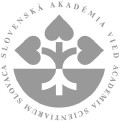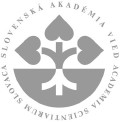Institute of Construction and Architecture SAS

 The Institute of Construction and Architecture was established in 1953 in order to carry out fundamental and applied research and new developments in the field of civil engineering and architecture.
The Institute of Construction and Architecture was established in 1953 in order to carry out fundamental and applied research and new developments in the field of civil engineering and architecture.
Over a period of nearly 50 years the Institute has developed to address the changing needs of theoretical, numerical and experimental research for professionals, firms and enterprises involved in structural engineering, mechanics, architecture, design, materials, building research and construction in civil engineering and building science generally.
Consulting skills, advanced soft and hardware for special numerical and experimental facilities and packages, internationally-acknowledged unique theoretical approaches together with new original developments, applications and achievements in structural engineering and architecture are available and emphasised items in the professional orientation and equipment of the institute.
The Institute's fully computerised facilities include original and unique experimental facilities such as vibration tables for earthquake simulations, a large artificial sky with artificial sun for daylight model measurements and insolation studies, large climatic chambers for the testing of structural elements, building components, exteriors and interiors, thermal conductivity equipment for laboratory research and in situ measurements, dynamic pulsation test machines, and a boundary layer wind tunnel. There is also Schenck equipment, loading machines, equipment for fatigue tests with variable time-history of loading or forcing, chambers and pools for long-term concrete deterioration tests, and special devices for pore estimation, stress-strain tests of structural materials, material durability tests, short and long-term tests of materials and elements under normal or adverse loading and environmental conditions.
Furthermore, the Institute is involved in activities dealing with civil engineering standardisation and national implementation of Eurocodes and ISO codes in the branch of civil engineering, in urban and regional planning in ramifications of architectural science and environmental designs, in utilisation of solar energy, in daylight research and insolation of exterior and interior spaces of buildings, constructions and structures generally, in new developments of structural mechanics and computer-aided design, in civil and earthquake engineering advice and in consulting works. Laboratory and in situ measurements support recommendations for building and structural design of constructions in concrete, steel and wood structures, for calculations and testing as well as for material science and application of silicate composites applied in civil engineering.
